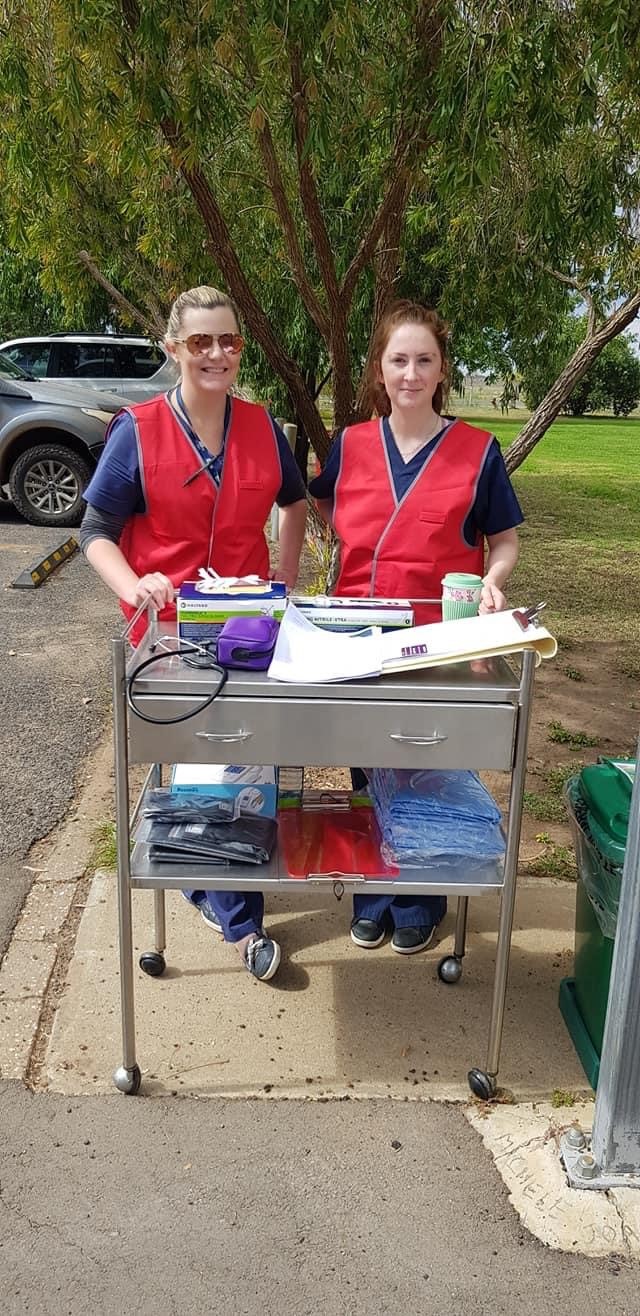As part of our acknowledgement of World Sepsis Day, we’ve dedicated the entire month of September to sepsis.
Since the development of the adult and paediatric sepsis clinical pathways, we’ve received wide-ranging feedback from clinicians about how their perceptions of sepsis or the way it is managed have changed.
This week, we’re bringing you some of these stories. Today we hear from Jodie Turvey, Nurse Educator, South West Hospital and Health Service.
When asked about the uptake of the pathways, Jodie says: ‘There’s so many things you need to have knowledge of when you’re working in a rural setting, which can be quite challenging. Because the pathways provide a step by step guided process for timely interventions and assessments, they’re a really useful tool for us, particularly for junior RNs or new grads, so we have seen good uptake.’
‘Personally, I think the value you get with a standardised approach of this clinical pathway is being able to rule out sepsis in patients that are presenting with the potential risk factors. No matter where within the South West, everyone has the same approach. It’s a great idea.’
‘Without it, we’re at risk of missing sepsis - it’s not a leading condition out here but it’s also not something to be underestimated or something you think you’re never going to see, and by the time they get septic they’re really unwell.’
‘There are things in the pathway they might not have considered because there’s not one key indicator of sepsis. The pathways make it safer for patients and clinicians and as nurses we feel supported to escalate our concerns’.
The South West has also done a five-star job in embedding sepsis into their education programs to maintain education and awareness. ‘Being rural we do get a turnaround of staff, same as everybody else I suspect, so it’s something we have to keep working at.’
The nurse education team, which supports an area as big as the state of Victoria, has incorporated the sepsis iLearn package into their education program. ‘New grads get a one-hour education session in their orientation week. We talk about the use of the pathway and then have case studies to test their knowledge on knowing when to screen. It’s good exposure for them and we encourage our new grads to be champions who will continue that work and that awareness wherever they go.’
‘We also built sepsis scenarios into our simulation in our courses on the deteriorating patient. We ask, “what sort of tools do you have for this situation?” to prompt them to use the pathway. Now they mention [the pathways] in sim training, which is great.’
With such great take-up from staff and a solid foundation of training and education, what has the impact of the pathways been so far in the South West? Elyse Hannan, Clinical Nurse from Dirranbandi shares a recent sepsis case:
Case One
A patient was brought into our emergency department by ambulance appearing very unwell; ashen in colour, with significant fevers, tachypnoea and hypotension. We thought it was likely septic shock with a probable abdominal source. I was able to establish emergent IV access while the first year RN I was working with accessed the sepsis pathway and called the on-call medical officer for an urgent review. Early identification of likely sepsis, prompt escalation and medical review, and early initiation of IV antibiotics led to this patient receiving optimal therapy without delay. The sepsis pathway allowed for prompt confirmation of required antibiotics.
During this case I was able to guide one of our first-year RNs through the sepsis pathway, while caring for her first septic patient. The pathway is of significant assistance, particularly to our junior staff as it not only outlines clear step-by-step guidelines, it encourages confidence around escalation and documentation. The patient in this case was transferred to a tertiary facility, having her diagnosis confirmed and treatment completed before returning home.
I have no doubt that the sepsis pathway assists us in early recognition, early escalation, and early optimal treatment that significantly improves the outcomes for our septic patients.

Pictured above: (L-R) Clinical Nurse Elyse Hannan and Millie Devine (Grad RN).